
Degrees of Freedom
This artwork, created by utilizing an artificial perception, explores the liminal space between the figurative and the abstract while engaging with the question of technology's role in shaping our understanding of objects and their representation. We employed AI models of artificial perception trained using ImageNet 1000. That’s a standardized dataset, widely used in the development and testing of image recognition. These datasets and models represent a standardized surrogate perception to which society increasingly delegates image recognition and classification tasks. A custom computer software was designed to generate images that are shown to the AI. These images feature limited geometric elements and color, as an attempt to extract the essential visual features of an object category. A geometric element in this instance refers to a segment where the radius and location of the endpoints are left open for variation, and one color can be used for a background or for all geometric elements. The software is used to test millions of variations of compositions of these elements and find the one that maximizes the recognizability by the AI as a certain object category. The resulting composition is then physically reconstructed as a paper collage, providing an opportunity for a closer visual and tangible inspection of the individual geometric features and element relations that led to the AI's recognition of the object category. The tactile low relief collage directly maps to the discrete elements that the AI saw, something that a pixel based digital representation would not convey. The series consists of sequences of images arranged according to their degrees of freedom, a technical term that refers to the number of things that can change in a system, in this case shape positions, angles and color components. Degrees of freedom are related to the expressive potential of a visual system. These images are arranged in ascending order of their degrees of freedom, leading to a seeming gradation from the abstract to the figurative. However, as all images are figurative to the AI, the work has a sense of ambivalent universality and peculiar incomprehension. This artwork offers a discussion on current technology and the standards it establishes for what is recognized as a typical representation of objects. Just as Adolphe Quetelet's average man or Le Corbusier's Modulor represented a certain idealized standard, these artificial perception systems are operational instances of an average perception. Though AI offers more nuanced standards, it is increasingly becoming the benchmark for the typical figure of objects. The artwork engages with this concept by reflecting on the current version of the figurative by AI in the abstract.
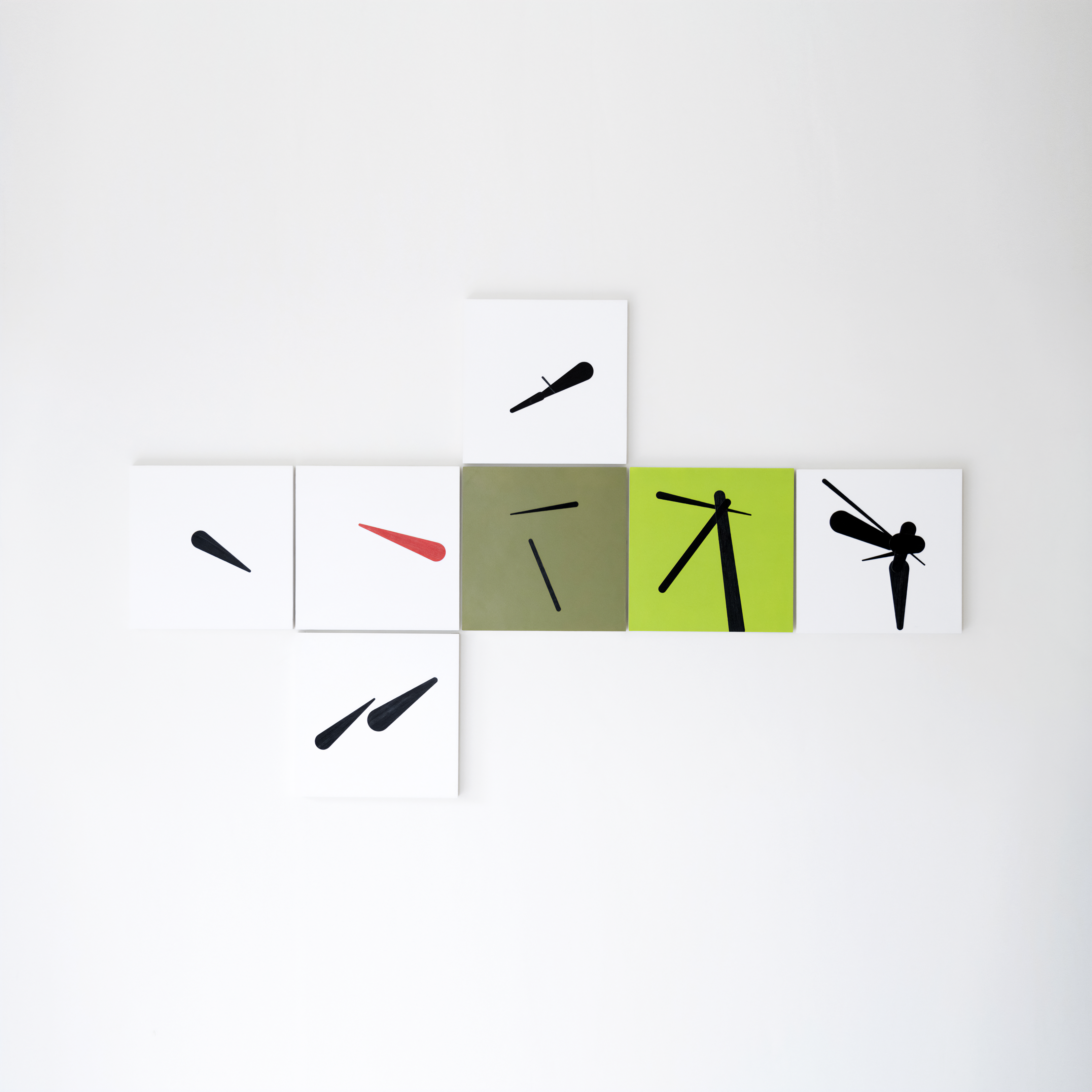
1, 2, 3, ... Dragonfly
Size: 330mm x 330mm per panel
Media: paper collage, acrylic, acrylic, wooden panel
Year: 2023

1, 2, 3, ... Dragonfly
Size: 330mm x 330mm per panel
Media: paper collage, acrylic, acrylic, wooden panel
Year: 2023
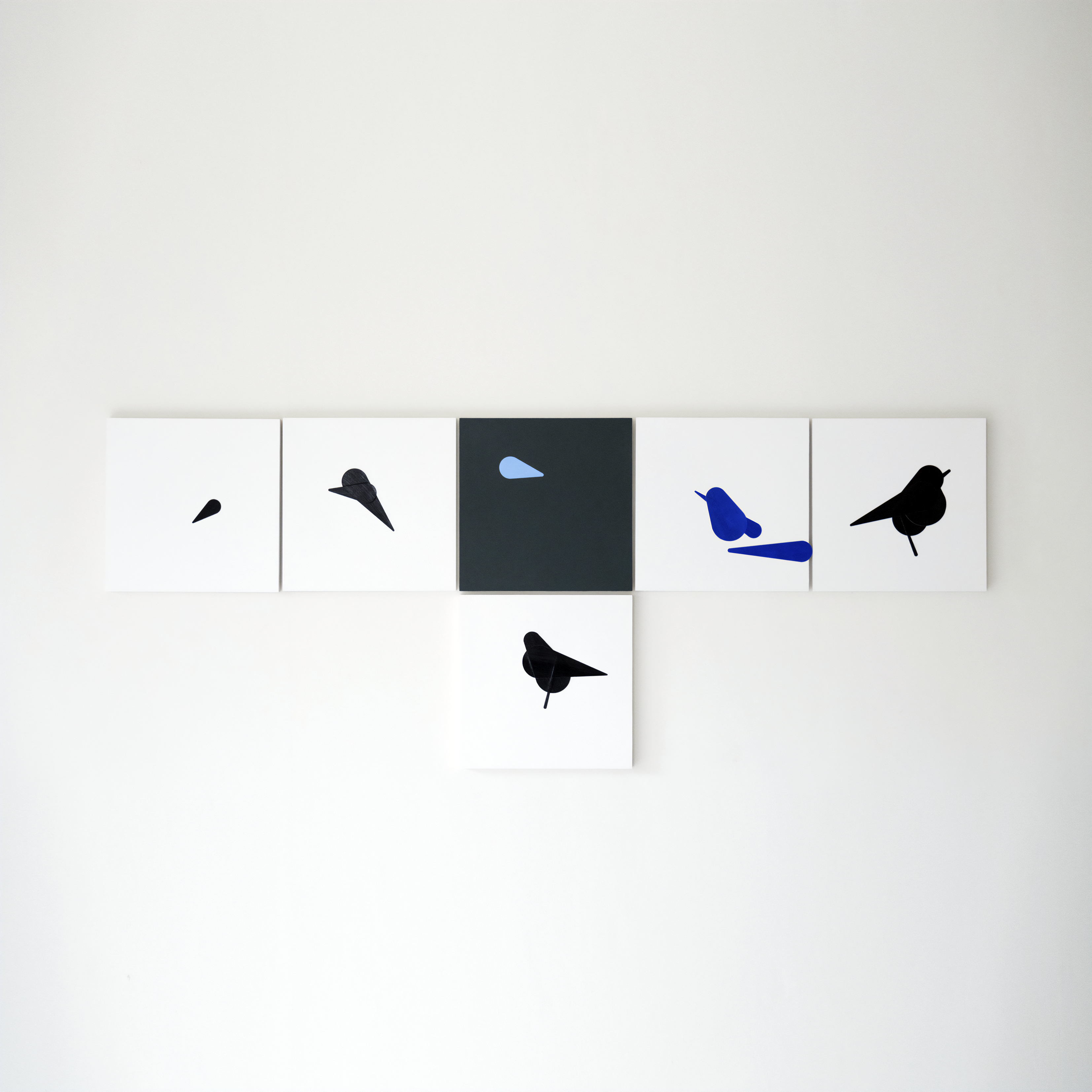
1, 2, 3, ... Water Ouzel
Size: 330mm x 330mm per panel
Media: paper collage, acrylic, acrylic, wooden panel
Year: 2023
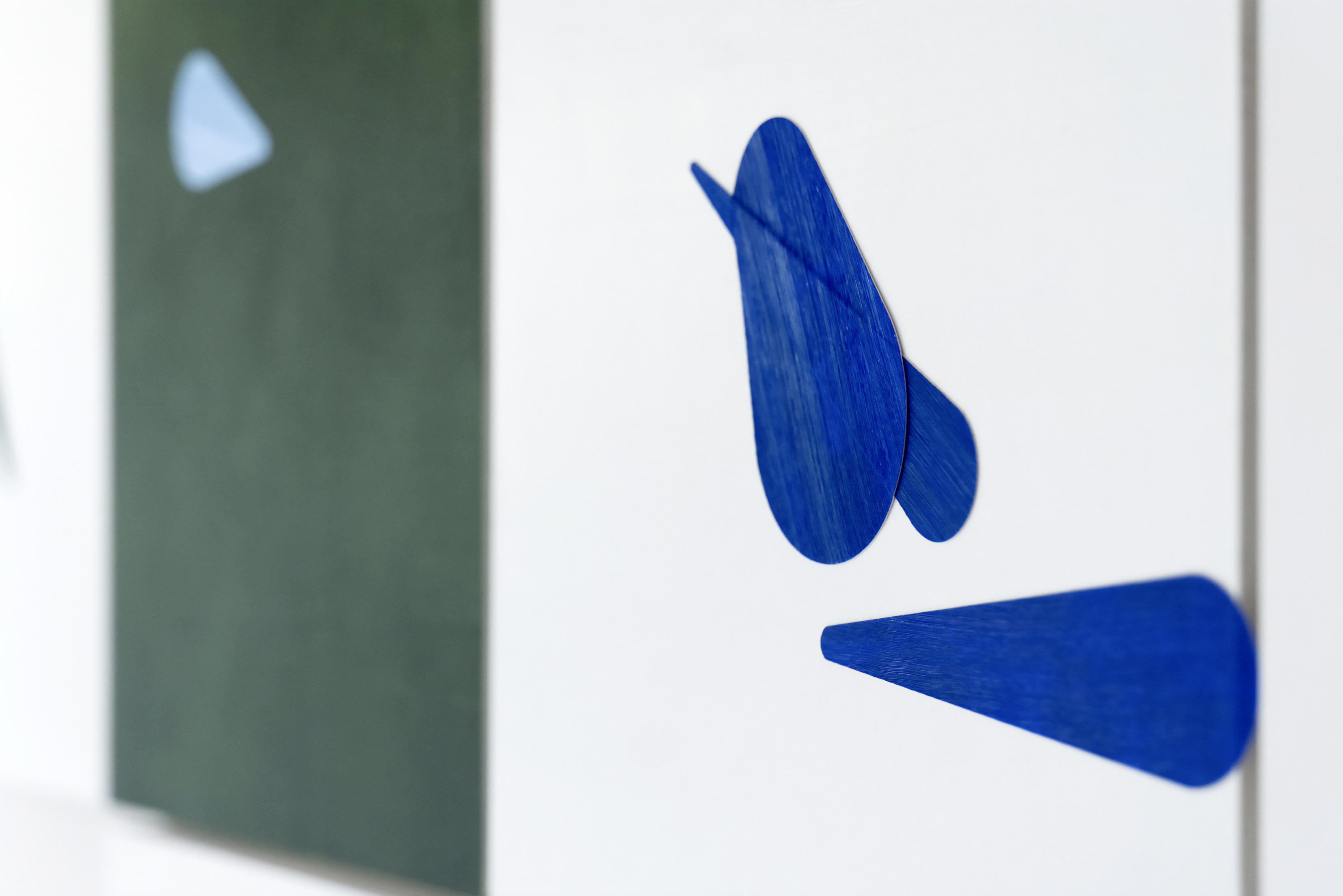
1, 2, 3, ... Water Ouzel
Size: 330mm x 330mm per panel
Media: paper collage, acrylic, acrylic, wooden panel
Year: 2023
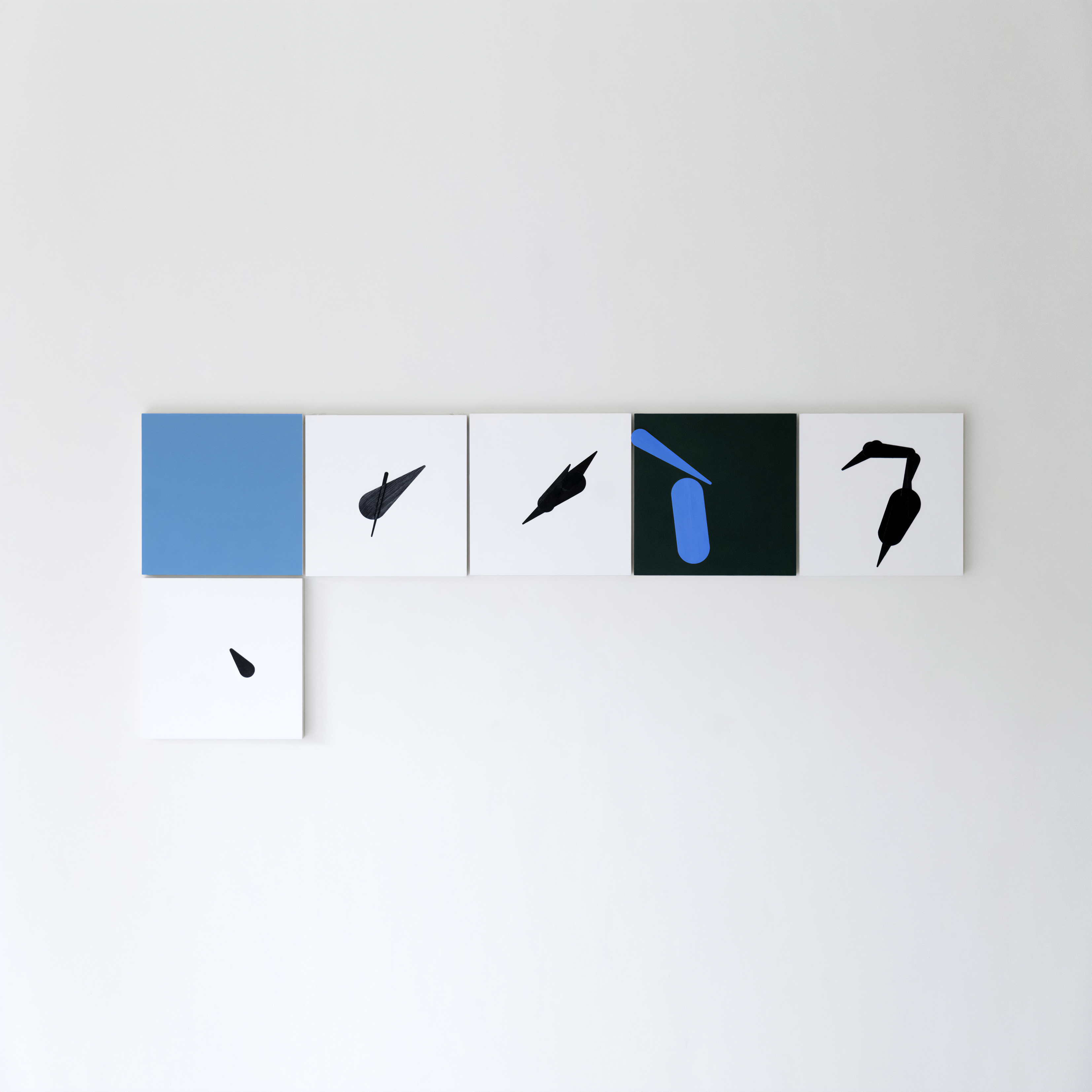
1, 2, 3, ... Blue heron
Size: 330mm x 330mm per panel
Media: paper collage, acrylic, acrylic, wooden panel
Year: 2023
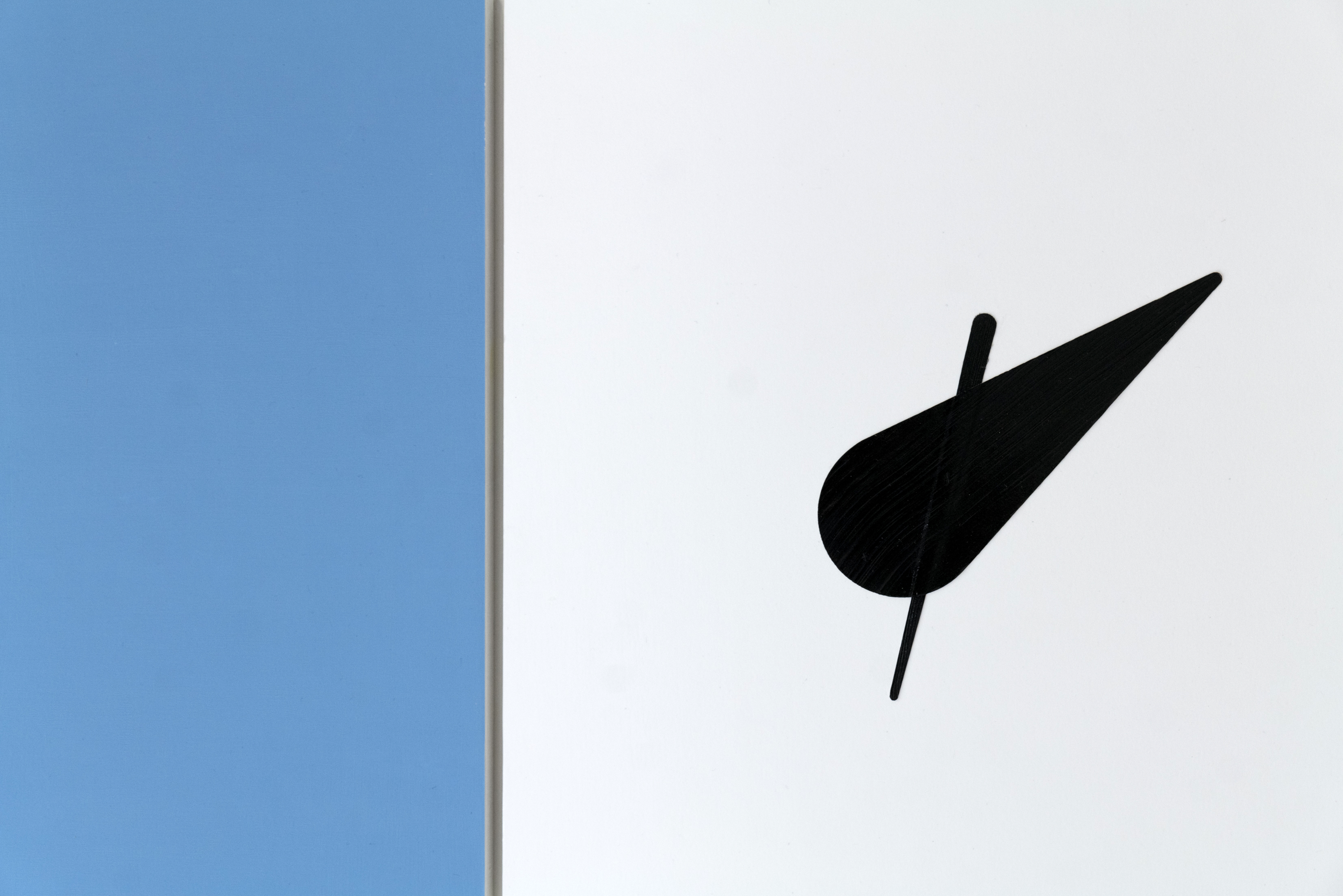
1, 2, 3, ... Blue heron
Size: 330mm x 330mm per panel
Media: paper collage, acrylic, acrylic, wooden panel
Year: 2023
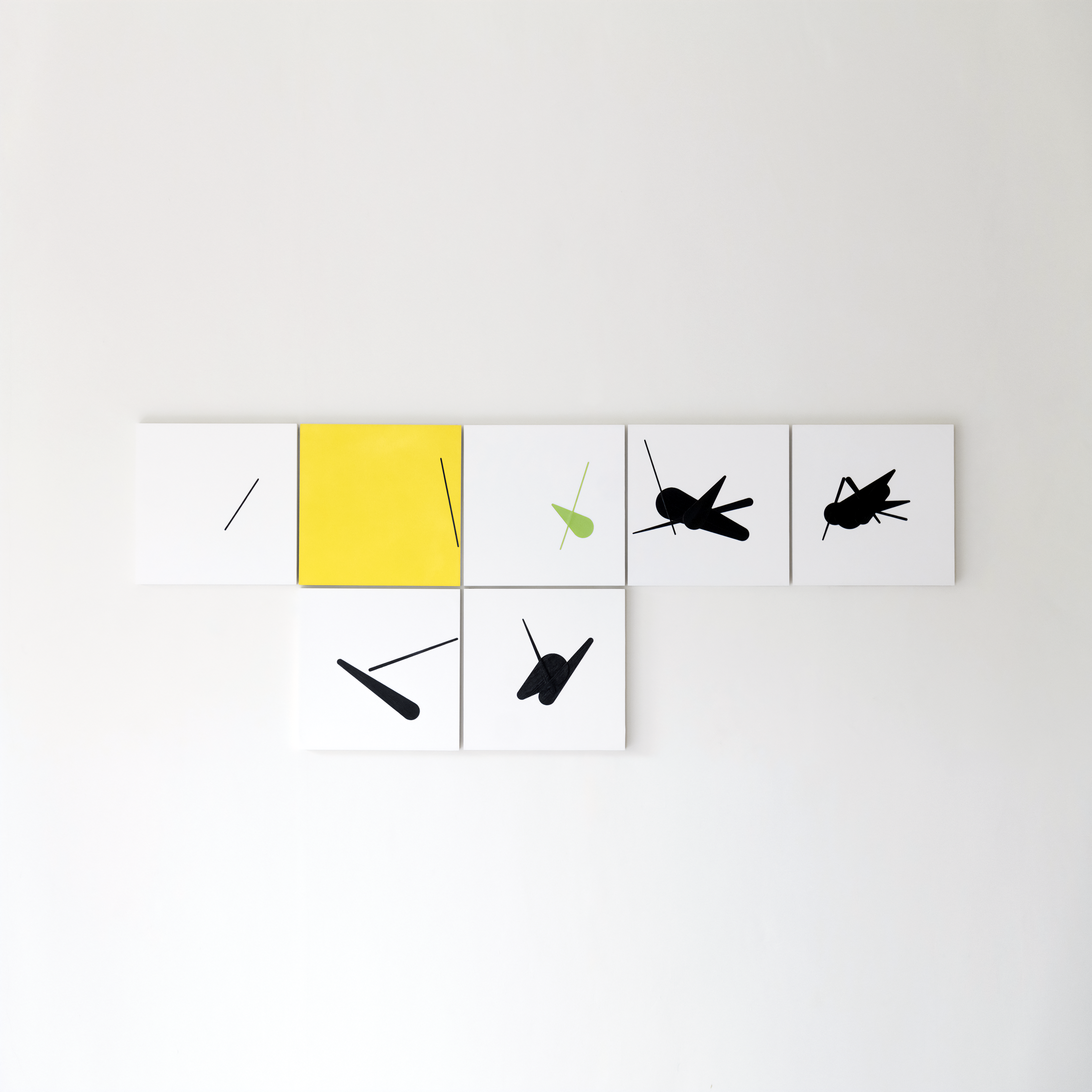
1, 2, 3, ... Cricket
Size: 330mm x 330mm per panel
Media: paper collage, acrylic, acrylic, wooden panel
Year: 2023
Process animation
1 2 3 6 strokes : process animation
Size : variable
Media :digital animation
Year : 2022